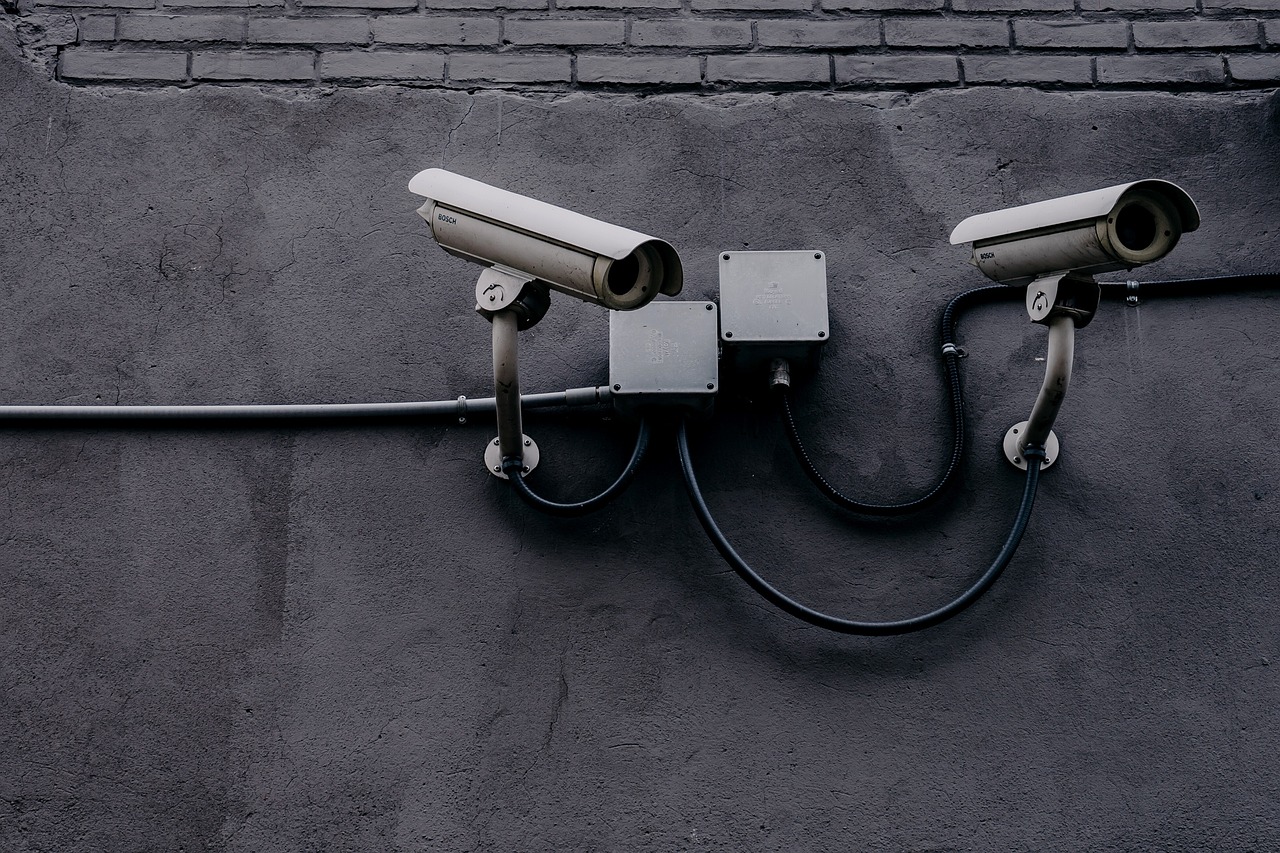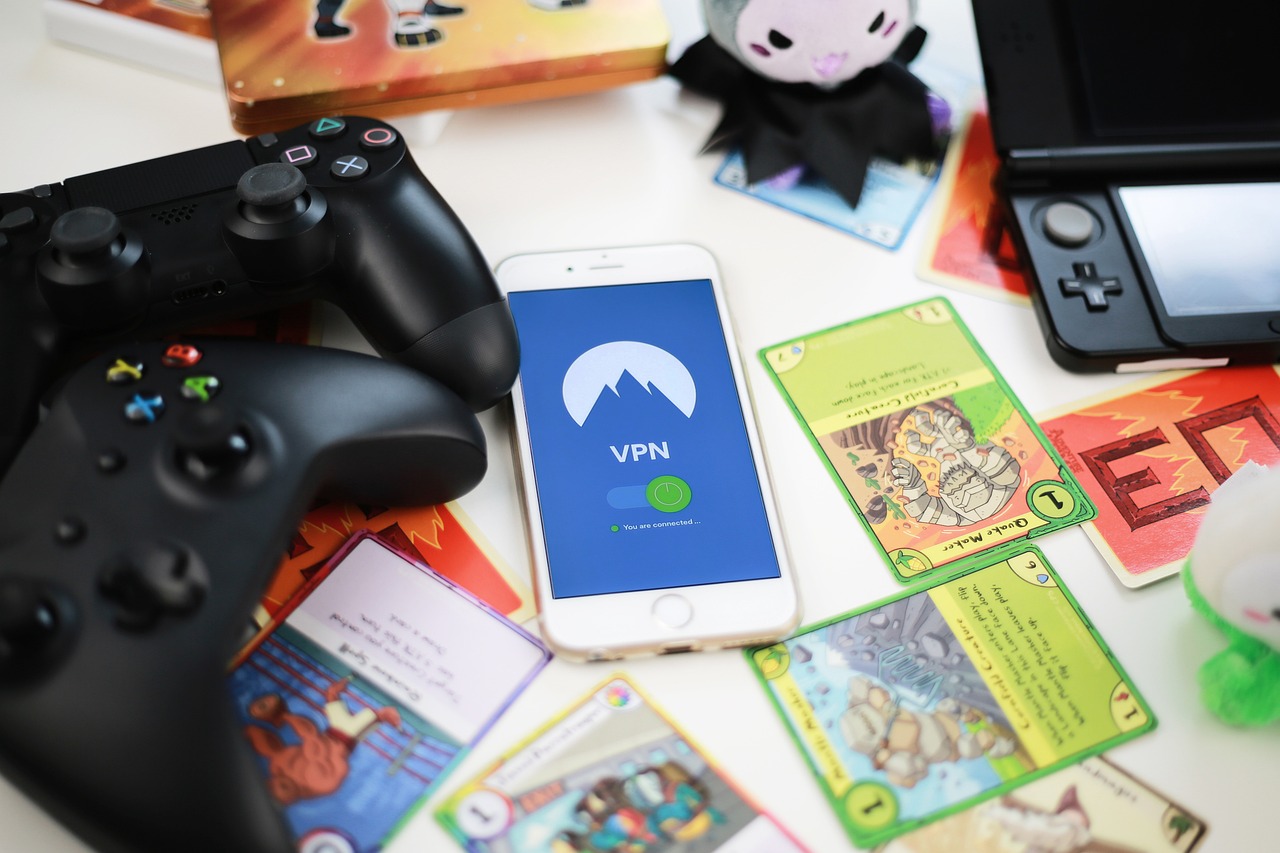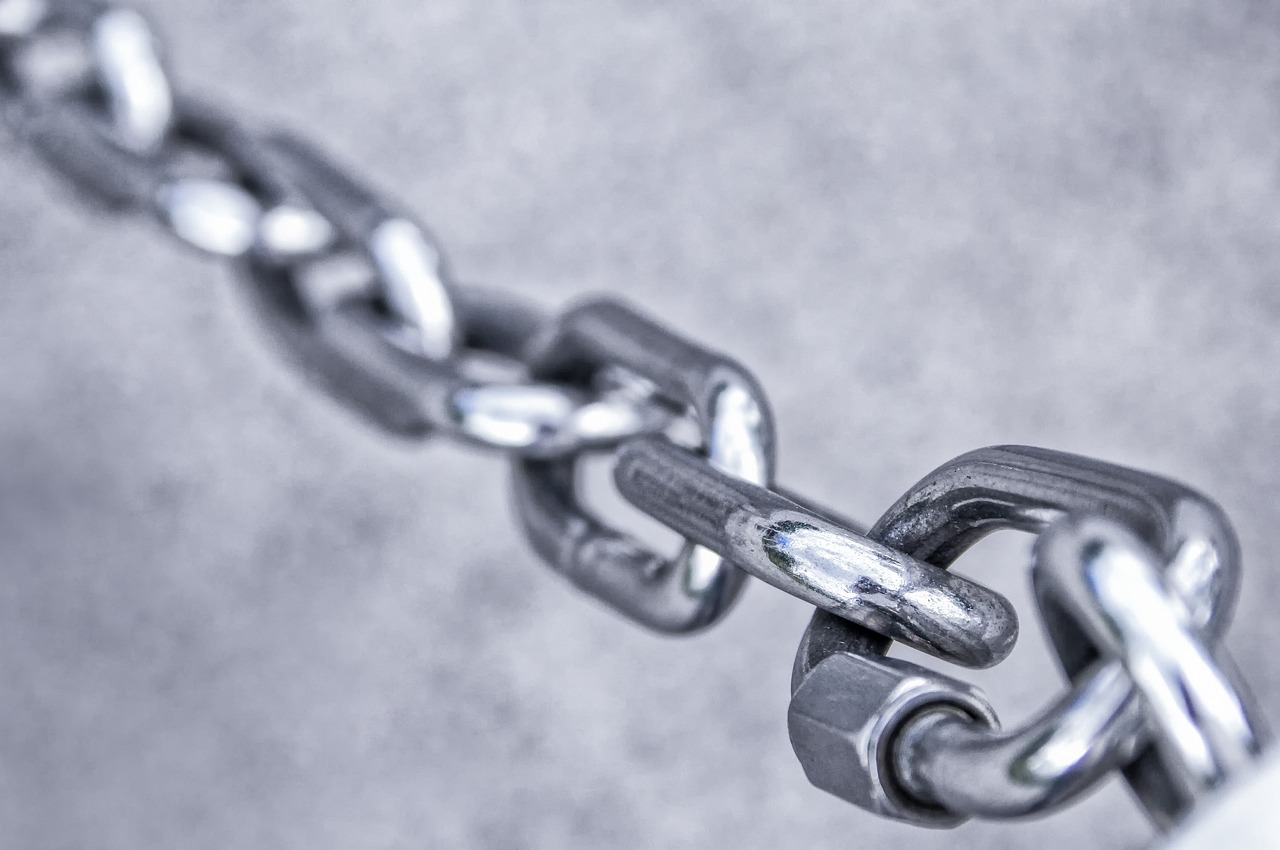Balancing Social Relationships and Online Security
In today's hyper-connected world, the lines between our social lives and online presence often blur. It's like walking a tightrope, where on one side, we have the warmth of friendships, support, and community, and on the other, the cold, hard reality of online security risks. So, how do we maintain that delicate balance? How can we nurture our social relationships while safeguarding our personal information? This article explores the intricate relationship between maintaining social connections and ensuring online safety, offering insights into how individuals can navigate both worlds effectively.
Social relationships are the bedrock of our emotional well-being. They provide us with a sense of belonging and a support system during life's ups and downs. Imagine a time when you faced a challenge; it was likely your friends or family who stepped in to offer help. This emotional support is invaluable, making it essential to prioritize our connections. However, in the digital age, where interactions often take place online, we must also be vigilant about how these relationships can impact our online security.
As we dive deeper into the digital realm, we encounter various online security risks that can jeopardize both our personal information and our relationships. It's crucial to be aware of these threats, as knowledge empowers us to take proactive measures to protect ourselves. Think of it this way: just as you wouldn’t leave your front door wide open when you leave the house, you shouldn’t leave your online presence unguarded either. By being informed, you can enjoy social interactions without unnecessary worry.
Some of the most prevalent online threats include phishing, malware, and identity theft. Recognizing these dangers is vital for maintaining both security and social interactions in the digital realm. For instance, phishing scams often masquerade as legitimate communications, tricking users into revealing sensitive information. Similarly, malware can infiltrate devices, disrupting online interactions and compromising security. Understanding these threats is the first step in safeguarding our online lives.
Phishing scams are like digital wolves in sheep's clothing. They trick users into revealing sensitive information, such as passwords or credit card numbers, by posing as trustworthy entities. Awareness of these tactics can help individuals safeguard their online presence while continuing to connect socially. Always be cautious about clicking on links in emails or messages from unknown sources, as they may lead to malicious websites designed to harvest your data.
Malware can be a real party crasher in your online interactions. It disrupts communication and can even steal personal information. Imagine inviting someone to your home, only to discover they've brought a virus that infects everything. Understanding how to protect your devices from such threats is essential for safe social engagement. Regularly updating your software and using trusted antivirus programs can help keep your digital space secure.
Implementing strong passwords, two-factor authentication, and regular updates are effective practices for enhancing online security while maintaining social relationships. Think of your password as the key to your digital home; the stronger it is, the safer you are. Using a combination of letters, numbers, and symbols can significantly enhance your online security. Additionally, enabling two-factor authentication adds an extra layer of protection, ensuring that even if someone gets hold of your password, they won't easily access your accounts.
Adjusting privacy settings on social media platforms is vital for protecting personal information. Learning how to manage these settings can help individuals balance openness with security. It's like having a cozy living room where you invite friends over, but you also have locks on the doors to keep unwanted guests out. By customizing your privacy options, you can control who sees your content and ensure that social interactions remain secure without sacrificing connection.
Customizing privacy options allows users to control who sees their content. This ensures that social interactions remain secure without sacrificing connection. For example, you can choose to share posts only with friends or limit the visibility of certain information. Being proactive about your privacy settings can help you enjoy social media without the fear of oversharing.
Being aware of how personal data is shared online is crucial for making informed decisions about social interactions. Think of it as sharing a secret; you want to ensure that only trusted friends know. Understanding the implications of sharing personal information can help protect your privacy while engaging with others. Always read privacy policies and be cautious about what you share, as it can have lasting effects on your online security.
Trust is essential for healthy online relationships. Just as in the real world, establishing and maintaining trust online can enhance social connections while ensuring security. It's like building a bridge; if the foundation is shaky, the whole structure is at risk. By fostering trust, we create a safer environment for ourselves and those we interact with.
Identifying red flags in online interactions can prevent potential security breaches. Awareness of warning signs fosters safer social experiences. For instance, if someone is overly aggressive in asking for personal information or seems too good to be true, it’s essential to proceed with caution. Trust your instincts; if something feels off, it probably is.
Open communication about online safety among friends and family strengthens relationships and promotes a culture of security awareness within social circles. Discussing experiences and sharing knowledge can help everyone stay informed and vigilant. Remember, the more we talk about online safety, the safer we all become.
- What are the best practices for creating strong passwords? Use a mix of uppercase and lowercase letters, numbers, and symbols. Avoid using easily guessable information like birthdays.
- How can I recognize phishing attempts? Look for suspicious emails that create a sense of urgency or ask for personal information. Always verify the sender's email address.
- What should I do if I suspect I've been a victim of identity theft? Report it to your bank and credit card companies immediately. Consider placing a fraud alert on your credit report.
- How often should I update my privacy settings on social media? Regularly review your privacy settings, especially after major updates to the platform, to ensure your information is secure.

The Importance of Social Relationships
Social relationships are the bedrock of our emotional well-being. They provide a sense of belonging and support that can uplift us during challenging times. Think about it: when you're feeling low, who do you turn to? Friends, family, or even online communities offer a safety net that can make the stormy seas of life feel a little calmer. The significance of these connections cannot be overstated, especially in today's fast-paced digital world. While we may be more connected than ever through social media, it's essential to recognize how these platforms can sometimes blur the lines between genuine interaction and superficial engagement.
In a world where likes and shares often replace face-to-face conversations, maintaining meaningful relationships requires intentional effort. It's not just about accumulating friends or followers; it's about nurturing bonds that provide emotional sustenance. Research shows that strong social ties can lead to improved mental health, lower stress levels, and even a longer life. So, how do we prioritize these connections while navigating the complexities of online interactions?
We must be mindful of our online presence and the potential risks that come with it. Engaging socially online is like walking a tightrope; one misstep can lead to a tumble into the depths of privacy breaches or identity theft. Therefore, understanding the significance of social relationships should go hand in hand with being aware of the online security landscape. This dual focus allows us to enjoy the best of both worlds—staying connected with loved ones while protecting our personal information.
Moreover, social relationships can serve as a buffer against the negative impacts of stress and anxiety. When we share our experiences and feelings with others, it creates a sense of community and support that is vital for mental health. Whether it's a casual chat with a friend or a deeper conversation with a family member, these interactions help us process our emotions and encourage resilience. In essence, they remind us that we are not alone in our struggles.
As we navigate the digital age, we should strive to cultivate these relationships with care and intention. This means being present in our interactions, whether online or offline, and ensuring that our digital footprints do not compromise our safety or the quality of our connections. The importance of social relationships lies not just in their existence but in their quality and depth. By prioritizing meaningful interactions, we can enhance our lives and the lives of those around us.
- Why are social relationships important for mental health?
Social relationships provide emotional support, reduce feelings of isolation, and contribute to overall well-being. Strong connections can enhance resilience against stress and anxiety.
- How can I protect my online security while maintaining social relationships?
Implement strong passwords, enable two-factor authentication, and regularly update your privacy settings on social media platforms to ensure your information remains secure.
- What are some signs of unhealthy online relationships?
Red flags include constant negativity, lack of trust, or pressure to share personal information. Being aware of these signs can help you maintain healthier connections.

Understanding Online Security Risks
In our hyper-connected world, the internet serves as a double-edged sword. On one hand, it facilitates our social interactions, allowing us to connect with friends, family, and even strangers across the globe. On the other hand, it opens the door to a plethora of online security risks that can jeopardize not only our personal information but also our social relationships. Understanding these risks is crucial for anyone looking to navigate the digital landscape safely.
Imagine walking through a bustling marketplace filled with vibrant stalls and friendly chatter. Now, envision that same marketplace, but with hidden thieves lurking behind every corner, waiting for the perfect moment to snatch your belongings. This analogy perfectly captures the essence of online interactions. While the internet is a vibrant space for social connection, it is also fraught with dangers that can catch you off guard.
Among the most common online security risks are phishing scams, malware, and identity theft. Each of these threats can have a profound impact on your online experience and social interactions. By recognizing these dangers, you empower yourself to take proactive measures that can protect both your personal data and your social engagements.
Let’s delve deeper into these common threats:
- Phishing: Phishing scams are designed to deceive you into revealing sensitive information, such as passwords or credit card numbers. These scams often come in the form of emails or messages that appear legitimate, tricking you into clicking on malicious links.
- Malware: This type of software is designed to disrupt, damage, or gain unauthorized access to your computer systems. Malware can be hidden in downloads or attachments, and once installed, it can compromise your online security and affect your ability to interact safely on social platforms.
- Identity Theft: This occurs when someone steals your personal information to impersonate you. This can lead to financial loss and can severely damage your reputation, making it difficult to maintain relationships.
Recognizing these threats is the first step toward safeguarding your online presence. Just like you would lock your doors and windows at home to protect your belongings, taking similar precautions in the digital realm is essential.
Phishing scams can be particularly insidious. They often masquerade as messages from trusted sources, such as your bank or a popular social media platform. These messages typically urge you to take immediate action, such as verifying your account or claiming a prize. If you fall for the bait, you could unwittingly provide personal information to cybercriminals. To avoid falling victim, always verify the source of any communication before clicking on links or providing information.
Malware is another significant threat that can disrupt your online interactions. Once installed on your device, it can track your activities, steal your information, and even hijack your social media accounts. To protect yourself, ensure that you have reliable antivirus software installed and that your devices are regularly updated. Think of it as putting on a seatbelt before driving; it’s a simple step that can save you from potential disaster.
In summary, understanding online security risks is paramount for anyone seeking to maintain their social relationships in the digital age. By being aware of the threats that lurk online and taking proactive measures to protect yourself, you can confidently navigate the social landscape without compromising your security.
Q1: What are the signs of a phishing scam?
A phishing scam often includes poor grammar, a sense of urgency, and requests for personal information. If something feels off, trust your instincts.
Q2: How can I tell if my device has malware?
Signs of malware can include slow performance, unexpected pop-ups, and unfamiliar programs. If you notice these issues, run a malware scan immediately.
Q3: Is it safe to use public Wi-Fi for social networking?
Public Wi-Fi can be risky because it’s easier for hackers to intercept your data. If you must use it, consider using a VPN for additional security.
Q4: How often should I update my passwords?
It’s a good practice to update your passwords every three to six months and to use different passwords for different accounts.

Common Online Threats
In our increasingly digital world, the risks associated with online interactions are more prevalent than ever. Understanding these is crucial for anyone looking to maintain their social connections while keeping their personal information secure. Let's dive into some of the most significant threats that lurk in the shadows of our online engagements.
One of the most notorious threats is phishing. This deceptive practice involves tricking individuals into revealing sensitive information, such as passwords or credit card numbers, by masquerading as a trustworthy entity. Phishing scams can come in various forms, including emails, social media messages, and even phone calls. They often create a sense of urgency or fear, prompting the victim to act quickly without thinking. For instance, a message claiming to be from your bank could ask you to verify your account details urgently, but it may actually be a ploy to steal your information.
Next, we have malware, a term that encompasses various malicious software designed to harm your computer or network. It can disrupt your online interactions, steal your personal data, or even take control of your device. Malware often enters your system through infected downloads, clicking on dubious links, or visiting compromised websites. To illustrate, imagine downloading a free app that promises to enhance your social media experience, only to find it has installed hidden software that tracks your online activity without your consent.
Another significant threat is identity theft. This occurs when someone uses your personal information, such as your name, social security number, or financial details, without your permission. Identity thieves can open accounts in your name, make unauthorized purchases, or even commit fraud. The emotional toll of identity theft can be devastating, as it not only jeopardizes your finances but also undermines your sense of security. To mitigate this risk, it’s essential to regularly monitor your financial statements and credit reports for any suspicious activity.
In summary, being aware of these common online threats is the first step in protecting yourself while engaging in social interactions online. By staying informed and vigilant, you can navigate the digital landscape safely and securely. Remember, the key to maintaining both your relationships and your security lies in understanding the potential dangers that exist and taking proactive measures to safeguard your personal information.
- What is phishing? Phishing is a fraudulent attempt to obtain sensitive information by pretending to be a trustworthy source, often through emails or messages.
- How can I protect myself from malware? To protect yourself from malware, ensure you have reliable antivirus software, avoid downloading suspicious files, and be cautious of links in emails or messages.
- What should I do if I become a victim of identity theft? If you suspect identity theft, immediately report it to your bank, credit card companies, and the authorities. Monitoring your credit report can also help you catch any unauthorized activity early.

Phishing Scams
Phishing scams are like the digital equivalent of a wolf in sheep's clothing. They disguise themselves as trustworthy entities to trick unsuspecting users into revealing sensitive information, such as passwords, credit card numbers, or social security details. Imagine receiving an email that looks like it’s from your bank, urging you to click on a link to verify your account. It feels genuine, right? But that’s the trap! Once you click, you might find yourself on a fraudulent website designed to steal your information.
These scams can take various forms, including emails, messages on social media, or even phone calls. They often create a sense of urgency, prompting you to act quickly without thinking. For instance, you might receive a message claiming that your account will be suspended unless you confirm your details immediately. This tactic plays on our natural instincts to protect what we have, making us more susceptible to their schemes.
To help you stay safe, here are some common signs of phishing scams:
- Generic Greetings: Be wary of emails that address you as "Dear Customer" instead of using your name.
- Suspicious Links: Hover over links before clicking to see if the URL matches the supposed sender.
- Urgency: Scammers often create a false sense of urgency to rush you into making a decision.
- Grammatical Errors: Many phishing attempts come from non-native speakers, so poor grammar can be a red flag.
It's crucial to remain vigilant and skeptical of unsolicited communications. Always verify the source by contacting the organization directly through official channels rather than using any contact information provided in the suspicious message. Additionally, consider using anti-phishing tools and browser extensions that can help identify and block phishing attempts. Remember, your online safety is paramount, and being informed is your first line of defense against these deceitful tactics.
1. What should I do if I suspect a phishing scam?
If you suspect a phishing scam, do not click any links or provide any information. Report the email or message to your email provider and the organization that is being impersonated.
2. How can I recognize a phishing email?
Look for generic greetings, suspicious links, and poor grammar. Phishing emails often create a sense of urgency to trick you into acting quickly.
3. Can phishing scams happen on social media?
Yes, phishing scams can occur on social media platforms through direct messages or fake accounts. Always verify the authenticity of messages and accounts before engaging.
4. What are some tools to help prevent phishing?
There are several anti-phishing tools and browser extensions available that can help identify and block phishing attempts. Keep your browser and security software updated for the best protection.

Malware and Viruses
In today's digital age, understanding malware and viruses is crucial for anyone who wants to enjoy a safe online experience while maintaining their social relationships. Think of malware as the uninvited guest at a party; it sneaks in, disrupts the atmosphere, and can even cause irreversible damage. Just as you wouldn't want a disruptive element at your social gatherings, you definitely don't want malware messing with your online interactions.
Malware, short for malicious software, encompasses a wide range of harmful programs designed to infiltrate and damage computers or networks. This can include everything from viruses that replicate themselves and spread to other files, to spyware that secretly monitors your activities. The implications can be severe, especially when you consider how much personal information we share online. For instance, a malware infection can lead to unauthorized access to your social media accounts, allowing hackers to impersonate you or steal sensitive information.
So, how do we protect ourselves from these digital threats? The first step is awareness. Being able to recognize the signs of a malware infection can save you a lot of trouble. Here are a few indicators to watch out for:
- Your device suddenly slows down or crashes frequently.
- Unfamiliar programs appear on your computer or device.
- You receive strange pop-up ads or alerts.
- Your social media accounts start sending messages without your knowledge.
To combat these issues, it's essential to implement a few best practices. Regularly updating your operating system and software can significantly reduce the risk of malware infections. These updates often include security patches that fix vulnerabilities hackers might exploit. Additionally, consider using reputable antivirus software that can detect and eliminate malware before it wreaks havoc on your digital life.
Another effective strategy is to practice safe browsing habits. Avoid clicking on suspicious links or downloading attachments from unknown sources. Remember, if something seems too good to be true—like an unbelievable offer or a message from a "friend" asking for help—it's best to proceed with caution. Just as you would be wary of a stranger at a social event, be equally cautious in the online world.
In conclusion, while the internet offers vast opportunities for social engagement, it also presents significant risks from malware and viruses. By staying informed and adopting proactive measures, you can protect your personal information and enjoy your online interactions without fear. Remember, maintaining your online security is just as important as nurturing your social relationships; they go hand in hand in the digital landscape.
1. What is malware?
Malware is a broad term that refers to any software designed to harm or exploit any programmable device or network. This includes viruses, worms, trojans, and spyware.
2. How can I tell if my device has malware?
Signs of malware can include slow performance, unexpected pop-ups, unfamiliar programs, and unauthorized access to your accounts. If you notice these signs, it's wise to run a malware scan.
3. What should I do if I suspect I have malware?
If you suspect a malware infection, disconnect from the internet, run a full system scan with updated antivirus software, and follow the recommended steps to remove any detected threats.
4. How can I prevent malware infections?
To prevent malware, regularly update your software, use strong passwords, avoid clicking on suspicious links, and install reputable antivirus software.

Best Practices for Online Security
In today's digital age, where our lives are increasingly intertwined with technology, implementing is not just a precaution; it's a necessity. Think of your online presence as a house. Just as you wouldn’t leave your front door wide open, you must ensure your digital doors are locked and secured. Here are some effective strategies to help you maintain your online safety while enjoying your social interactions:
One of the most fundamental steps you can take is to use strong passwords. A strong password is your first line of defense against unauthorized access. Avoid using easily guessable information like birthdays or pet names. Instead, create complex passwords that combine letters, numbers, and symbols. For example, instead of "Password123," try something like "P@55w0rd!2023." This makes it significantly harder for cybercriminals to crack your code. Remember, the longer and more complex, the better!
Next, consider enabling two-factor authentication (2FA). This adds an extra layer of security by requiring not just your password but also a second piece of information, usually a code sent to your phone. It’s like having a second lock on your door; even if someone has your key, they still can’t get in without that second piece of information. Many social media platforms and online services offer 2FA, so make sure you take advantage of it.
Another critical practice is to keep your software updated. Whether it's your operating system, web browser, or apps, updates often contain important security patches that protect against the latest threats. Just like you wouldn’t ignore a warning about a storm coming your way, don’t ignore those update notifications! Set your devices to update automatically if possible, so you can stay one step ahead of potential vulnerabilities.
Moreover, be cautious about the information you share online. While it’s great to connect and share experiences, oversharing can expose you to risks. Think of your personal information as currency; the more you give away, the less valuable it becomes. Before posting, ask yourself if the information could be misused or if it might compromise your safety. It's wise to limit the amount of personal data you make publicly available.
Lastly, regularly review your privacy settings on social media platforms. These settings are your control panel for who can see your content. Adjusting them can help ensure that only trusted friends and family have access to your personal information. It’s like putting up a fence around your yard—keeping unwanted visitors out while allowing your friends to come and go freely.
By following these best practices, you can create a safer online environment for yourself and your loved ones. It’s all about finding the right balance between enjoying social connections and protecting your personal information. So, take a moment to evaluate your online security measures today and make adjustments where necessary. Your future self will thank you!
- What is the most important step for online security? Using strong, unique passwords for each of your accounts is crucial.
- How does two-factor authentication work? It adds an extra layer of security by requiring a second form of identification, usually a code sent to your phone.
- Why is it important to update software regularly? Updates often fix security vulnerabilities that could be exploited by hackers.
- What should I do if I think my account has been hacked? Change your password immediately and enable two-factor authentication if you haven’t already.

Navigating Privacy Settings
In today's digital landscape, navigating privacy settings is more crucial than ever. With the rise of social media and online interactions, understanding how to manage your privacy can feel like trying to solve a complex puzzle. Imagine you’re hosting a party; you wouldn’t want just anyone to waltz in and see your personal space, right? Similarly, your online profiles deserve that same level of protection. Adjusting privacy settings allows you to control who sees your content, ensuring that your social interactions remain secure without sacrificing the connections that matter most.
First and foremost, it's important to recognize that each social media platform has its own set of privacy settings. For example, Facebook, Instagram, and Twitter all provide different options for users to customize their privacy. By taking the time to explore these features, you can tailor your online presence to fit your comfort level. Here’s a quick breakdown of what you might want to look for:
| Platform | Key Privacy Features |
|---|---|
| Profile visibility, post sharing options, friend requests, and location sharing. | |
| Account privacy (public or private), story settings, and comment controls. | |
| Tweet visibility, direct message settings, and tag permissions. |
By customizing these options, you can significantly reduce the risk of unwanted exposure. For instance, setting your profile to private on platforms like Instagram ensures that only approved followers can see what you share. This level of control not only protects your personal information but also fosters a sense of trust among your friends and family, as they know their interactions with you are secure.
Another important aspect of navigating privacy settings is understanding data sharing. Many platforms collect and share your data with third parties, often without your explicit consent. This can lead to targeted ads or even data breaches. To combat this, take the time to review the terms and conditions of each platform. While it may seem tedious, knowing how your data is used can empower you to make informed decisions about your social interactions. You might ask yourself, “Is this app really worth my data?”
In addition to adjusting privacy settings, it’s wise to regularly audit your friend lists and followers. Are there people in your social circles who you no longer interact with? Removing them can enhance your online security and streamline your connections. Just like decluttering your home, keeping your online space tidy can lead to a more enjoyable experience.
Finally, don't hesitate to educate your friends and family about privacy settings. Sharing your knowledge can create a ripple effect, fostering a community that values online safety. Encourage open discussions about what’s appropriate to share and what should remain private. After all, a well-informed circle is a secure circle.
- How often should I update my privacy settings? It's a good idea to review your privacy settings every few months or whenever a platform updates its policies.
- Can I customize my privacy settings for individual posts? Yes, most platforms allow you to customize privacy settings for each post or story.
- What should I do if I feel my privacy has been compromised? Immediately review your security settings, change your passwords, and consider reporting the issue to the platform.

Customizing Privacy Options
In today’s digital age, customizing your privacy options on social media platforms is not just a good idea—it's essential. Think of your online presence as a house; if you leave the doors and windows wide open, anyone can walk in. By adjusting your privacy settings, you create a secure environment that allows you to enjoy social interactions without compromising your personal information. So, how do you go about it? Let’s break it down.
First off, most social media platforms provide a variety of privacy settings that allow you to control who sees your posts, who can send you friend requests, and even who can comment on your content. For instance, you might want to limit your audience to "Friends Only" instead of "Public." This simple change can drastically reduce the number of strangers who have access to your personal life. It’s like deciding who gets to come into your home; you wouldn’t invite just anyone, right?
Moreover, it’s vital to regularly review these settings. Social media platforms frequently update their privacy policies and features. What was secure a year ago might not be secure today. By staying informed and adjusting your settings accordingly, you can maintain a balance between being social and staying safe. Here’s a quick checklist of options you might want to customize:
- Profile Visibility: Choose who can see your profile—friends, friends of friends, or the public.
- Post Visibility: Set your default audience for posts, ensuring that only those you trust can see your updates.
- Friend Requests: Decide whether anyone can send you requests or just people you know.
- Location Sharing: Turn off location tagging to keep your whereabouts private.
Additionally, consider the information you share in your bio. While it’s tempting to share your life story, less is often more. By keeping your bio concise and avoiding sensitive details such as your address or phone number, you further protect yourself from unwanted attention. Think of it as putting up a “No Trespassing” sign—it's a clear message that you value your privacy.
Lastly, don’t forget about the importance of reviewing your friend list. Sometimes, people accumulate connections over time without realizing that they may not know everyone on their list personally. Periodically cleaning up your friend list can help ensure that you’re only sharing your life with people you trust. Remember, it’s not about the quantity of friends; it’s about the quality of your connections.
By taking these steps to customize your privacy options, you can create a safer online environment that allows you to enjoy the benefits of social relationships without the lurking threat of privacy invasions. So, are you ready to take control of your online presence?
Q: How often should I review my privacy settings?
A: It's a good practice to review your privacy settings at least once every few months, especially after major updates from social media platforms.
Q: Can I customize privacy settings for individual posts?
A: Yes, most platforms allow you to customize the audience for each post, giving you flexibility in what you share and with whom.
Q: What should I do if I suspect someone is misusing my information?
A: If you believe someone is misusing your information, report them to the platform immediately and consider tightening your privacy settings.

Understanding Data Sharing
This article explores the intricate relationship between maintaining social connections and ensuring online safety, offering insights into how individuals can navigate both worlds effectively.
Social relationships provide emotional support and enhance overall well-being. Understanding their significance helps individuals prioritize connections while being mindful of online interactions that may compromise security.
Online security risks can jeopardize personal information and relationships. Identifying common threats empowers individuals to take proactive measures to protect their data while engaging socially online.
Phishing, malware, and identity theft are prevalent online threats. Recognizing these dangers is crucial for maintaining both security and social interactions in the digital realm.
Phishing scams trick users into revealing sensitive information. Awareness of these tactics can help individuals safeguard their online presence while continuing to connect socially.
Malware can disrupt online interactions and compromise security. Understanding how to protect devices from such threats is essential for safe social engagement.
Implementing strong passwords, two-factor authentication, and regular updates are effective practices for enhancing online security while maintaining social relationships.
Adjusting privacy settings on social media platforms is vital for protecting personal information. Learning how to manage these settings can help individuals balance openness with security.
Customizing privacy options allows users to control who sees their content. This ensures that social interactions remain secure without sacrificing connection.
In today's digital landscape, understanding data sharing is more crucial than ever. When we engage on social media or any online platform, we often share personal information, sometimes without even realizing it. This sharing can range from basic details like our names and locations to more sensitive data such as contact information and preferences. The challenge lies in recognizing how this data can be used by others, including companies, advertisers, and even malicious actors.
It's essential to grasp the concept of data sharing because it directly impacts our privacy and security. For instance, when we post pictures or updates, we may inadvertently expose ourselves to risks. Here are some key points to consider:
- Public vs. Private Sharing: Always be aware of the difference between public and private posts. Sharing something publicly can mean that anyone, including strangers, can view it.
- Third-Party Apps: Many social media platforms allow third-party applications access to your data. Always check what permissions you grant to these apps.
- Terms and Conditions: It’s often tedious, but reading the terms and conditions of the platforms you use can reveal how your data will be used and shared.
Furthermore, understanding how data is shared can empower you to make informed decisions about your online interactions. For example, consider how many times you’ve clicked “accept” on a privacy policy without reading it. By being more vigilant, you can better protect your personal information and ensure that your social engagements are safe and enjoyable.
Trust is essential for healthy online relationships. Understanding how to establish and maintain trust can enhance social connections while ensuring security.
Identifying red flags in online interactions can prevent potential security breaches. Awareness of warning signs fosters safer social experiences.
Open communication about online safety among friends and family strengthens relationships and promotes a culture of security awareness within social circles.
Q: What should I avoid sharing on social media?
A: Avoid sharing sensitive information such as your home address, phone number, or any personal identification details.
Q: How can I check what data I'm sharing on social media?
A: You can review your privacy settings on each platform to see what information is public and what is kept private.
Q: Are third-party apps safe to use?
A: Not all third-party apps are safe. Always research the app and review permissions before granting access to your data.

Building Trust in Online Interactions
In today's digital world, where social interactions often take place behind screens, trust has become a cornerstone of healthy online relationships. Just like in the physical world, where trust is built through consistent actions and open communication, the same principles apply online. It's essential to recognize that trust doesn't just happen; it needs to be nurtured and maintained. So, how can we cultivate this vital element in our online interactions?
First and foremost, recognizing red flags is crucial. In a landscape filled with anonymity, it’s easy for malicious actors to disguise themselves. Be vigilant for signs that something might be off, such as overly aggressive requests for personal information or inconsistencies in what someone shares about themselves. For instance, if someone claims to be a tech expert but struggles to answer basic questions, it might be time to proceed with caution. Awareness of these warning signs can significantly reduce the risk of falling prey to scams or deceitful interactions.
Moreover, encouraging open communication about online safety amongst friends and family can strengthen relationships and foster a culture of security awareness. When you discuss your experiences and concerns regarding online interactions, it not only helps you feel more secure but also empowers your loved ones to be more cautious. This open dialogue can lead to shared tips on recognizing suspicious behavior, which ultimately enhances trust within your social circles. For example, sharing a story about a phishing attempt you encountered can serve as a valuable lesson for others, making them more aware of potential risks.
Another key aspect in building trust involves being transparent about your own online presence. When you share your experiences, interests, and even your concerns regarding online safety, it creates a more authentic connection with others. People are more likely to trust someone who is open and honest. This transparency can also extend to how you manage your privacy settings and data sharing. When others see you taking steps to protect your information, they may feel more comfortable doing the same, which fosters a sense of mutual respect and trust.
Lastly, consider the importance of consistency in your online interactions. Just as in face-to-face relationships, being reliable and trustworthy online is vital. If you commit to responding to messages or participating in discussions, follow through on those commitments. This consistency not only builds trust but also establishes a reputation for being dependable. Over time, your friends and acquaintances will come to rely on you, knowing that you are someone they can count on, both for support and for maintaining a secure online environment.
In essence, building trust in online interactions is a multifaceted endeavor that requires vigilance, communication, transparency, and consistency. By being proactive and mindful of your online behavior and that of others, you can create a safer and more trustworthy digital landscape. Remember, trust is not just a word; it's a vital component that enriches our online experiences and keeps us connected in a meaningful way.
Q: How can I tell if someone is trustworthy online?
A: Look for consistency in their communication, transparency about their identity, and a willingness to engage in open discussions about online safety. Be cautious of any red flags, such as reluctance to share information or overly aggressive behavior.
Q: What should I do if I encounter a suspicious person online?
A: Trust your instincts. If something feels off, it’s best to disengage from the interaction. You can also report suspicious behavior to the platform you’re using to help protect others.
Q: Can discussing online safety with friends really make a difference?
A: Absolutely! Open discussions about online safety can raise awareness and help everyone in your circle recognize potential threats, ultimately leading to a safer online experience.

Recognizing Red Flags
In the vast digital landscape, where social interactions often take place behind a screen, it's crucial to be vigilant and recognize potential red flags that could indicate a threat to your online security. Just like in the real world, where you might sense something off about a new acquaintance, the same instincts should apply online. But what exactly should you be looking out for? Here are some critical warning signs to keep in mind:
- Unusual Behavior: If someone you've recently connected with starts asking for personal information too quickly or seems overly interested in your private life, consider it a red flag. Trust your gut; if it feels strange, it probably is.
- Inconsistent Stories: Pay attention to inconsistencies in what someone tells you. If their stories don’t add up or they frequently change details, it could indicate that they are not being honest with you.
- Pressure Tactics: Be wary of anyone who pressures you into sharing sensitive information or making quick decisions. Healthy relationships, whether online or offline, should never feel rushed or forced.
- Too Good to Be True: If someone seems excessively charming or offers unbelievable deals, it’s worth investigating further. Scammers often use flattery and enticing offers to lure victims.
Recognizing these red flags is just the first step. Once you identify a potential threat, it’s essential to take action. This could mean blocking the individual, reporting them to the platform, or even discussing the situation with trusted friends or family. Remember, your safety comes first, and being proactive can prevent more significant issues down the line.
Moreover, fostering a culture of awareness among your social circles can amplify the effectiveness of recognizing these red flags. By sharing your experiences and insights with friends and family, you can help create a safer online environment for everyone. After all, in the realm of digital connections, we’re all in this together!
Q: What should I do if I encounter a red flag in an online interaction?
A: If you notice any red flags, it's best to cease communication with the individual and report them to the platform. Protecting your personal information should always be your top priority.
Q: How can I educate my friends and family about online safety?
A: Sharing articles, hosting discussions, or even organizing workshops on online safety can help raise awareness and equip your loved ones with the knowledge they need to navigate the digital world safely.
Q: Are there tools available to help me stay safe online?
A: Yes! There are numerous tools such as password managers, VPNs, and antivirus software that can enhance your online security. Additionally, many social media platforms offer privacy settings that you should customize.

Encouraging Open Communication
This article explores the intricate relationship between maintaining social connections and ensuring online safety, offering insights into how individuals can navigate both worlds effectively.
Social relationships provide emotional support and enhance overall well-being. Understanding their significance helps individuals prioritize connections while being mindful of online interactions that may compromise security.
Online security risks can jeopardize personal information and relationships. Identifying common threats empowers individuals to take proactive measures to protect their data while engaging socially online.
Phishing, malware, and identity theft are prevalent online threats. Recognizing these dangers is crucial for maintaining both security and social interactions in the digital realm.
Phishing scams trick users into revealing sensitive information. Awareness of these tactics can help individuals safeguard their online presence while continuing to connect socially.
Malware can disrupt online interactions and compromise security. Understanding how to protect devices from such threats is essential for safe social engagement.
Implementing strong passwords, two-factor authentication, and regular updates are effective practices for enhancing online security while maintaining social relationships.
Adjusting privacy settings on social media platforms is vital for protecting personal information. Learning how to manage these settings can help individuals balance openness with security.
Customizing privacy options allows users to control who sees their content. This ensures that social interactions remain secure without sacrificing connection.
Being aware of how personal data is shared online helps individuals make informed decisions about their social interactions, protecting their privacy while engaging with others.
Trust is essential for healthy online relationships. Understanding how to establish and maintain trust can enhance social connections while ensuring security.
Identifying red flags in online interactions can prevent potential security breaches. Awareness of warning signs fosters safer social experiences.
Encouraging open communication about online safety among friends and family is crucial in today's digital age. It’s like building a safety net; the more connections you have, the stronger your protection against potential threats. When we talk openly about our online experiences, we not only share valuable insights but also create an atmosphere of trust and support. This can lead to a culture where everyone feels comfortable discussing their concerns and experiences.
For instance, consider having regular conversations about the types of content shared on social media. Ask questions such as, “Have you ever encountered a strange message?” or “What do you think about the privacy settings on our favorite platforms?” These discussions can help uncover potential risks and promote a proactive approach to online safety.
Moreover, sharing personal experiences can be enlightening. If someone has faced a phishing attempt, sharing that story can serve as a lesson for others. It’s not just about protecting oneself; it’s about looking out for each other, creating a community that prioritizes safety. By fostering this kind of dialogue, we not only strengthen our relationships but also equip ourselves and our loved ones with the knowledge to navigate the digital landscape securely.
- What are some signs of a phishing scam? Look for poor grammar, urgent requests for personal information, or unfamiliar sender addresses.
- How can I improve my online security? Use strong passwords, enable two-factor authentication, and keep your software updated.
- Why is it important to customize privacy settings? Customizing privacy settings helps control who sees your information, reducing the risk of unwanted exposure.
- How can I encourage my friends to discuss online safety? Start conversations about your own experiences and share resources that highlight the importance of online security.
Frequently Asked Questions
- What are the main benefits of maintaining social relationships?
Social relationships provide emotional support, increase happiness, and contribute to overall well-being. They help us navigate life's challenges and enhance our sense of belonging.
- What are the common online security risks I should be aware of?
Common online security risks include phishing scams, malware infections, and identity theft. Being aware of these threats is crucial for protecting your personal information while enjoying social interactions online.
- How can I recognize a phishing scam?
Phishing scams often come in the form of emails or messages that appear legitimate but ask for sensitive information. Look for poor grammar, urgent requests, and unfamiliar sender addresses as red flags.
- What are some best practices for online security?
To enhance your online security, use strong, unique passwords for different accounts, enable two-factor authentication, and keep your devices updated with the latest security patches.
- How do I adjust my privacy settings on social media?
Most social media platforms have privacy settings that allow you to control who can see your posts and personal information. Navigate to the settings section of your profile to customize these options to suit your comfort level.
- Why is trust important in online interactions?
Trust is essential for healthy online relationships as it fosters open communication and reduces the risk of misunderstandings or security breaches. Building trust can enhance your social connections while ensuring safety.
- How can I encourage open communication about online safety?
Discussing online safety with friends and family can promote awareness and create a culture of security. Share tips and experiences to help everyone feel more secure while engaging socially online.
- What should I do if I suspect a security breach?
If you suspect a security breach, immediately change your passwords, enable two-factor authentication, and monitor your accounts for suspicious activity. Report any unauthorized access to the relevant platforms.



















